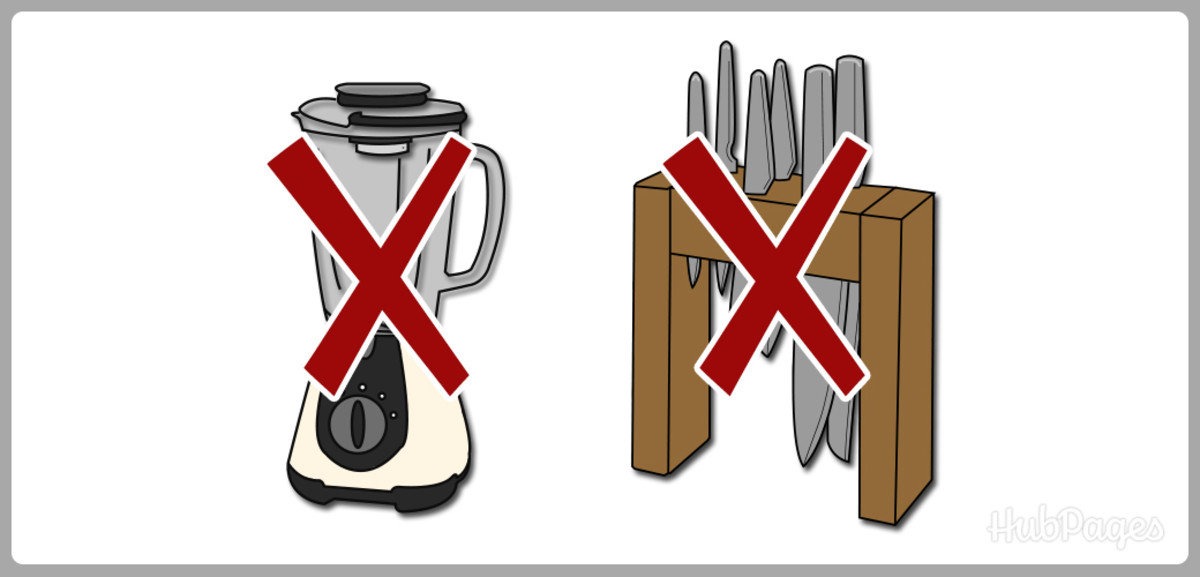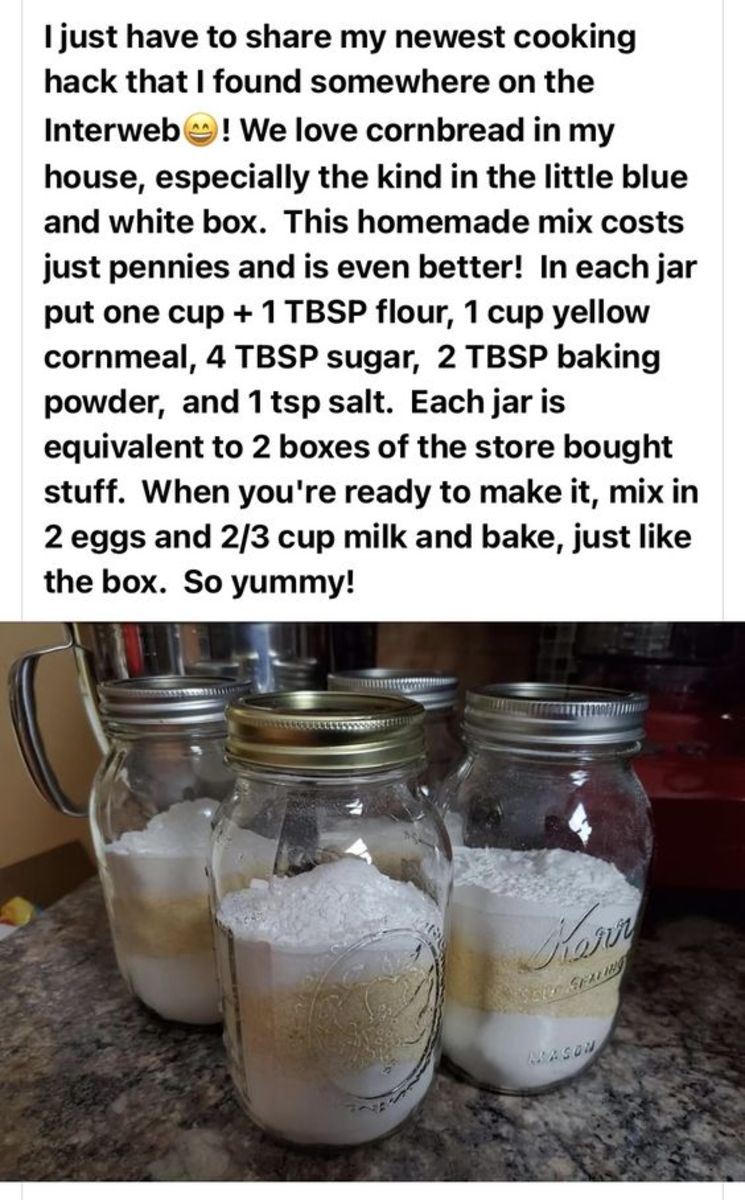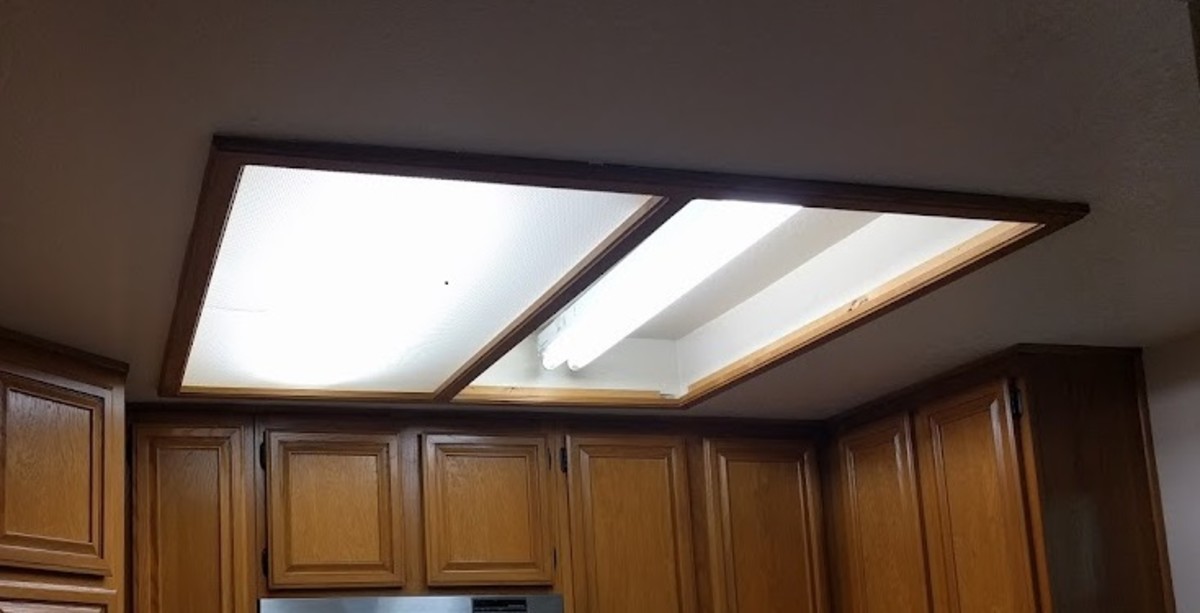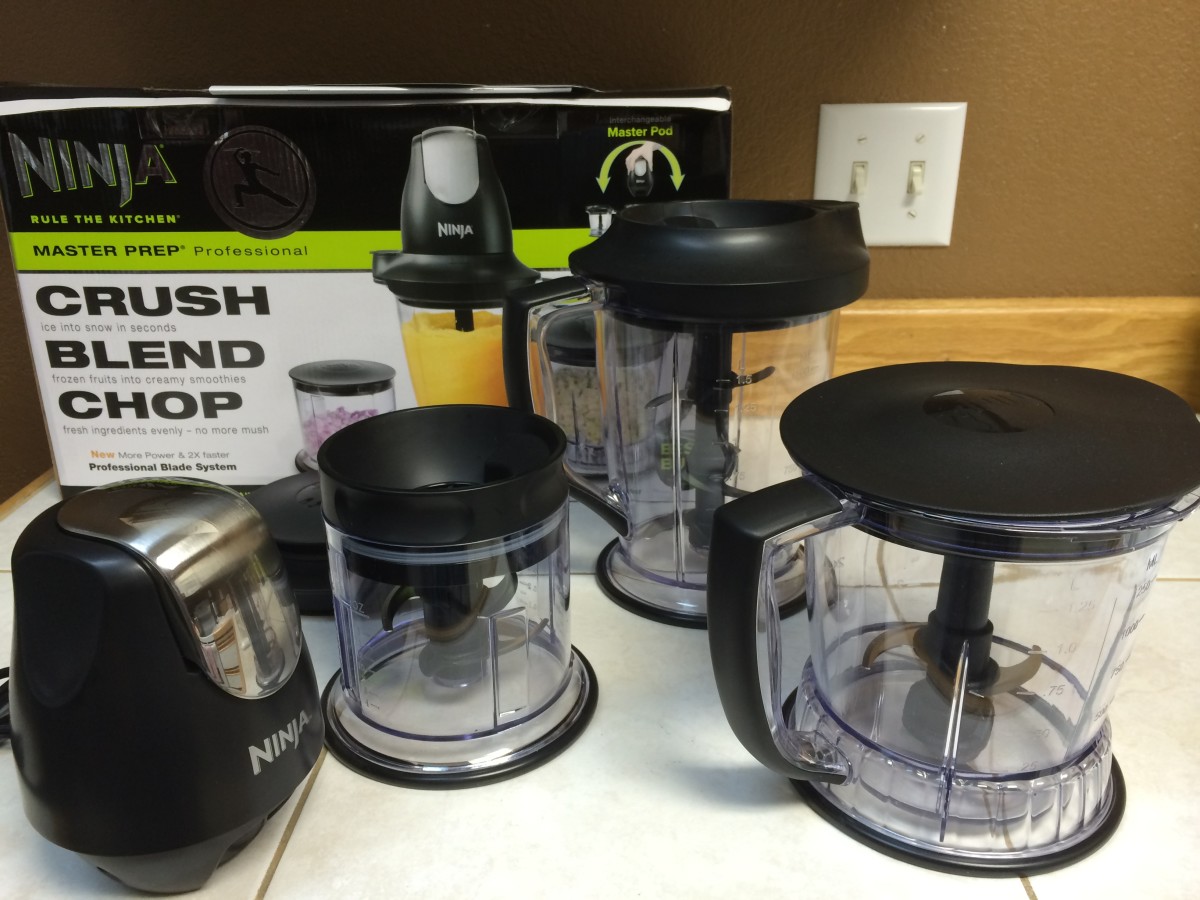The Best Way to Organize a Kitchen
Efficient Kitchen Organization Techniques
Whether you are first starting out, moving from one house to another, or have simply outgrown your old kitchen, it is time to look at organizing and arranging it to make sure it is as efficient and convenient as it can be for you. While you may not have the budget to gut and remodel it, there are many ways you can make any configuration work by simply changing things around, and using a few inexpensive organizational gadgets.
A well organized kitchen will makes cooking easier because you can find all the utensils and ingredients quickly, without having to overcome any obstacles in your path. It will make you feel like cooking and will be welcoming place for people who come to visit you.

The Best Way to Organize an Efficient Kitchen
The first and most important step is to think about how you currently use the kitchen. Instead of working around the configuration of the kitchen, you may be able to move some things around and make the kitchen more efficient by placing things closer to where you actually need them. You may have changed the way you use the kitchen, without considering changing the layout to fit your new pattern.
Many times, we place things the way our parents did, or the way we think things are supposed to be. We may have internalized some "rules" without actually realizing that we did that. For example, I always thought that pots and pans must be by the stove. While this is a perfectly good rule, it doesn't work well in my kitchen because of where my dishwasher is placed. We need to let those old rules go, and think about what makes sense for the way we use the kitchen, using the current configuration.
You want to place the most frequently used items in the most convenient and accessible place possible for the way you use them. In that way, you will make your day to day cooking easier. You don't want the turkey platter that you use once a year to take up valuable shelf space when you have to go out of your way to get to the things you use every day.
Think about each type of item in the kitchen and decide the best place to put them. I recommend coming up with a plan first, and then implementing it, since each decision will impact the other decisions.
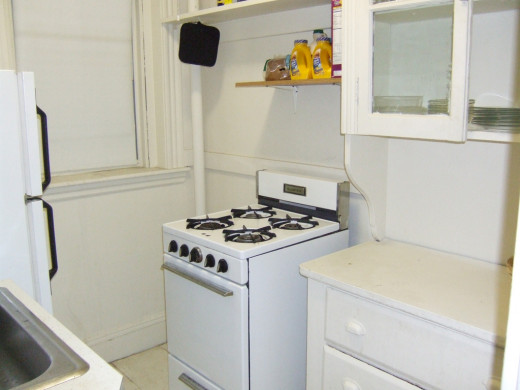
The Kitchen Triangle
Most efficiency experts will tell you that the three anchors in the kitchen are the stove, the refrigerator, and the sink. These three compose of the kitchen triangle, and are used the most when you cook. If these items are placed in a very awkward and inconvenient way, you may consider moving at least one of them.
Chances are, though, you are stuck with the current configuration. This is fine; you can still make sure you make the best of wherever they are placed. It is important that you keep the path between these items obstacle free. You shouldn't place a table that you will have to go around or a dog dish that you will trip over every time you cook.
Please note that your own needs may vary. You may use a microwave or toaster oven more often than the stove, and the dishwasher more often than the sink. You will be able to avoid some inconveniences in the kitchen by simply keeping the path between these items clear.
Where to Store Small Kitchen Appliances
There are so many small appliances that are also a part of the modern kitchen. The microwave, toaster, toaster oven, coffee maker, waffle maker, rice cooker, and the list goes on and on. If they are used less than once a week, they should be stored in a cabinet so that valuable counter space remains free for daily use. Putting them away will also keeps avoid the kitchen from looking cluttered. They can be placed in harder to reach cabinets, such as the very top shelf, to save the prime shelf space for more frequently used items. Store the infrequently used items in another room. I keep mine on a shelf in the basement.
For the appliances that will remain on the counter, think about the most efficient place to keep them. Take into consideration the size and shape of the counter, and the proximity to other items you will need when using them, and the availability of electrical outlets. For example, my coffee pot is close to the coffee cups, and my microwave is close to the fridge.
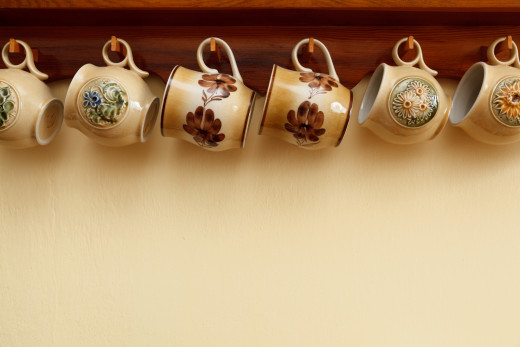
Where to Put the Dishes, Pots and Pans
Take the following things into consideration when deciding where to place your dishes - plates, saucers, bowls, pots and pans, silverware, other utensils, and other kitchen gadgets:
- The proximity to the place you will be using them, in terms of efficiency. It is generally good to have glasses by the refrigerator and pots and pans by the oven.
- The size and shape of the cabinets. If you have lots of pots and pans, and the cabinet right next to the stove is too small, you may want to consider storing them in a bigger cabinet, or reducing the number of pots and pans.
- The location of the dishwasher, if you have one. I did not place any dishes above the dishwasher, because it would be difficult for me to put them away without having to keep opening and closing the dishwasher door over and over again.
My Favorite Organization Products from Amazon
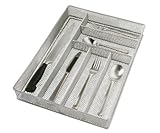
Canned Goods and Pantry Items
The canned goods and pantry items are probably the most difficult for most people, because it has the most turnover. Different sizes and number of food items get purchased, moved around, and, unfortunately, some items wind up being expired before we get a chance to use them. Here are some tips on deciding how to deal with pantry items.
- Store like items together. All tomato products should be near each other, for example.
- Another option may be to store items that work together by each other. For example, store the spaghetti next to the spaghetti sauce. This is especially helpful for standard recipes that you use frequently and for things you always use together.
- When you are about to run out of something, add the item to the grocery list that is on the refrigerator. Ask family members to do the same. This may save emergency trips to the grocery store.
- Family members can also add special requests on the list, which the grocery shopper will buy the next time the item is on sale, only if it meets the family criteria of price and healthiness, etc.
- Clean out the refrigerator and pantry before you go shopping when it is at its emptiest. Besides being easier to clean then, this will also give you an idea of what you already have when you go shopping.
- When buying a new item to try, use it within the week. These are the things that wind up getting expired because you are not used to eating them.
- When buying canned or boxed goods that don't have an expiration date on them, write the purchase date in magic marker on the box. A simple month and year will be sufficient. That way, you have an idea of its age. If you don't want to go through the trouble of looking for an expiration date, you can simply write the purchase date on every pantry item.
- Place new items in the back, so the older ones get used up first.
- Once in a while, instead of going shopping, have a week where you challenge yourself to use up the things that are in the cabinets and fridge. This helps to use up items before the expiration dates, and saves money.
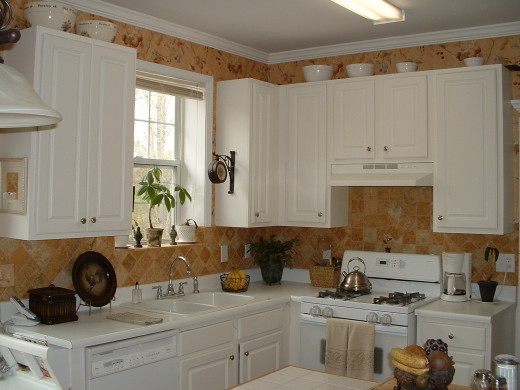
Other Stuff in the Kitchen
Don't forget to think about where to place the miscellaneous things that reside in the kitchen, and whether you want to move them to another room.
- Kitchen towels can be placed in a drawer in the kitchen or on a shelf in the pantry. If you have space, you can store them in the dining room, in the drawer in the china cabinet for example.
- Cleaning supplies can be stored underneath the kitchen sink, but be careful to have a lock if you have children or pets that can get into them. Keep the extra supplies in another room, such as the basement or the pantry to save valuable space in the kitchen.
- If you don't have a lot of room, you should avoid having other miscellaneous things in the kitchen. Paper, for example, is not a good idea in the kitchen. It can get grease spots from the kitchen, and is very flammable. If you keep the junk drawer out of the kitchen, you will free up valuable kitchen space.
Organizing and Arranging Your Kitchen
Once you have made your decision about where everything should go, it is time to implement the change. As you put away each item in its place, you should consider how many of each item you need to keep in the kitchen, and whether you really need each item. The fewer items you have in the kitchen, the more space you will have, and the less you will have to move around to get to the things you really use.
As you put things away, you may find that you have to tweak the strategy a little, especially if you misjudged how much space something would take up, or came upon an obstacle you hadn't considered. Simply do the best for the way your kitchen is configured and arrange everything so that the most common items will be the most convenient to access.
How often do you reorganize your kitchen?
Kitchen Organization Strategies
An efficiently organized kitchen will save you time. You won't have to look for something because you will know exactly where it is, and you won't have to wade through a lot of clutter to get to it.
It is easier to clean, because there isn't too much to move around. Even putting away groceries will be easier because you know exactly where to place everything.
An efficient kitchen will save you money. You won't buy too much of one product because you didn't know you had it, or throw things away because it expired before you could use it.
It will also save you stress. You won't be stressed out because you have to stumble over the dog dish every time you cook, can't find the ingredient to make a recipe, or have to throw something away because it expired.
It can make you and your family healthier. Since cooking will be easier, you will not dread it, and will be more likely to cook more instead of eating out.
The best way to achieve all this is to simply organize the kitchen in a way that works best for the way you use it.
© 2012 Shasta Matova


